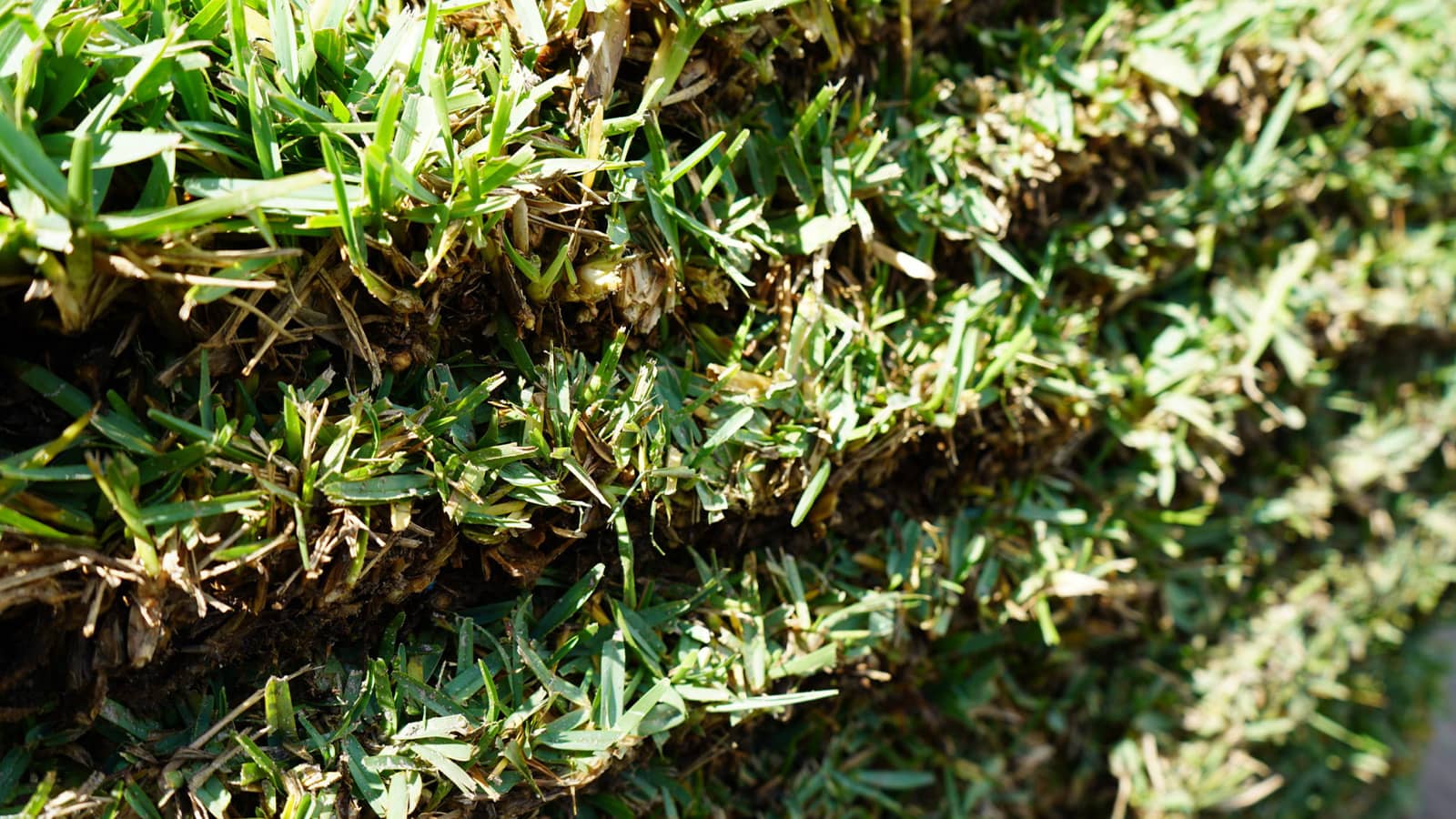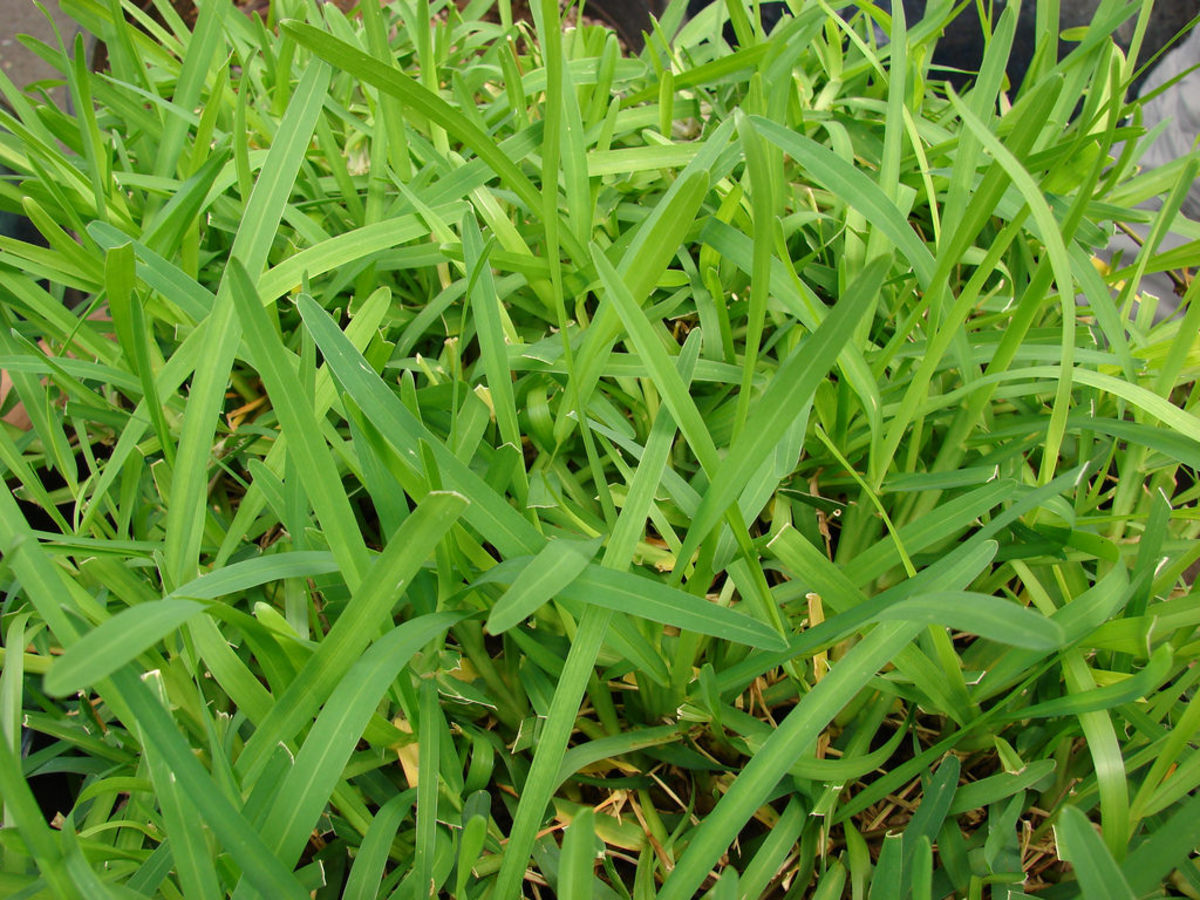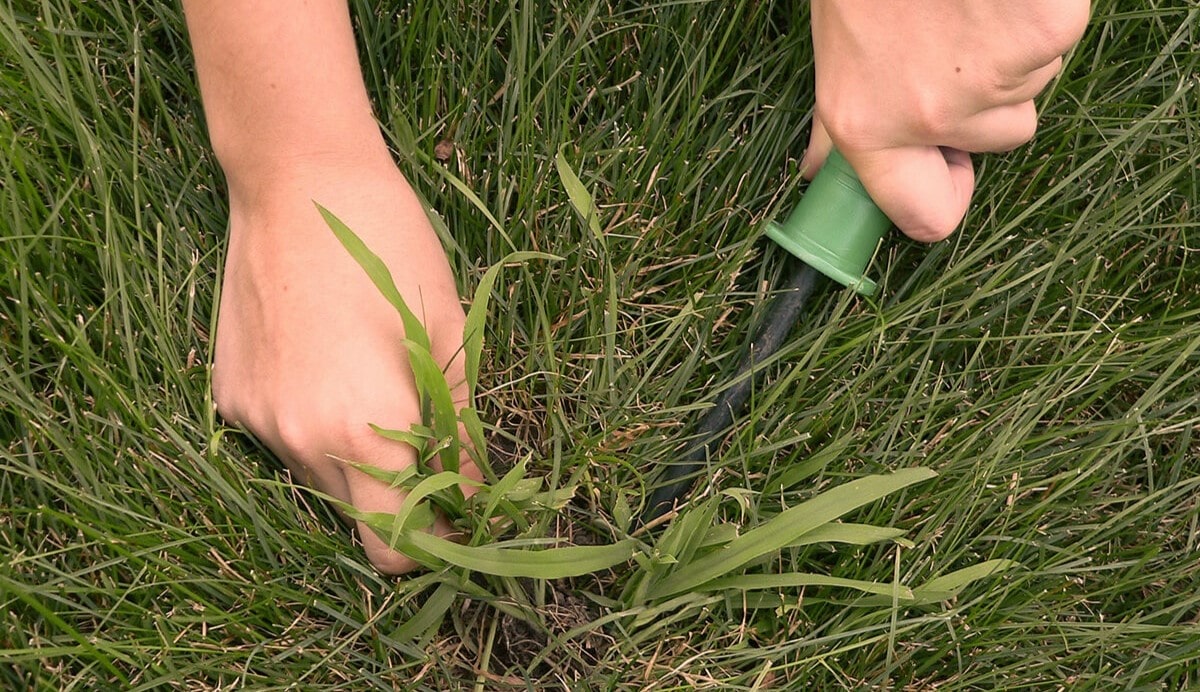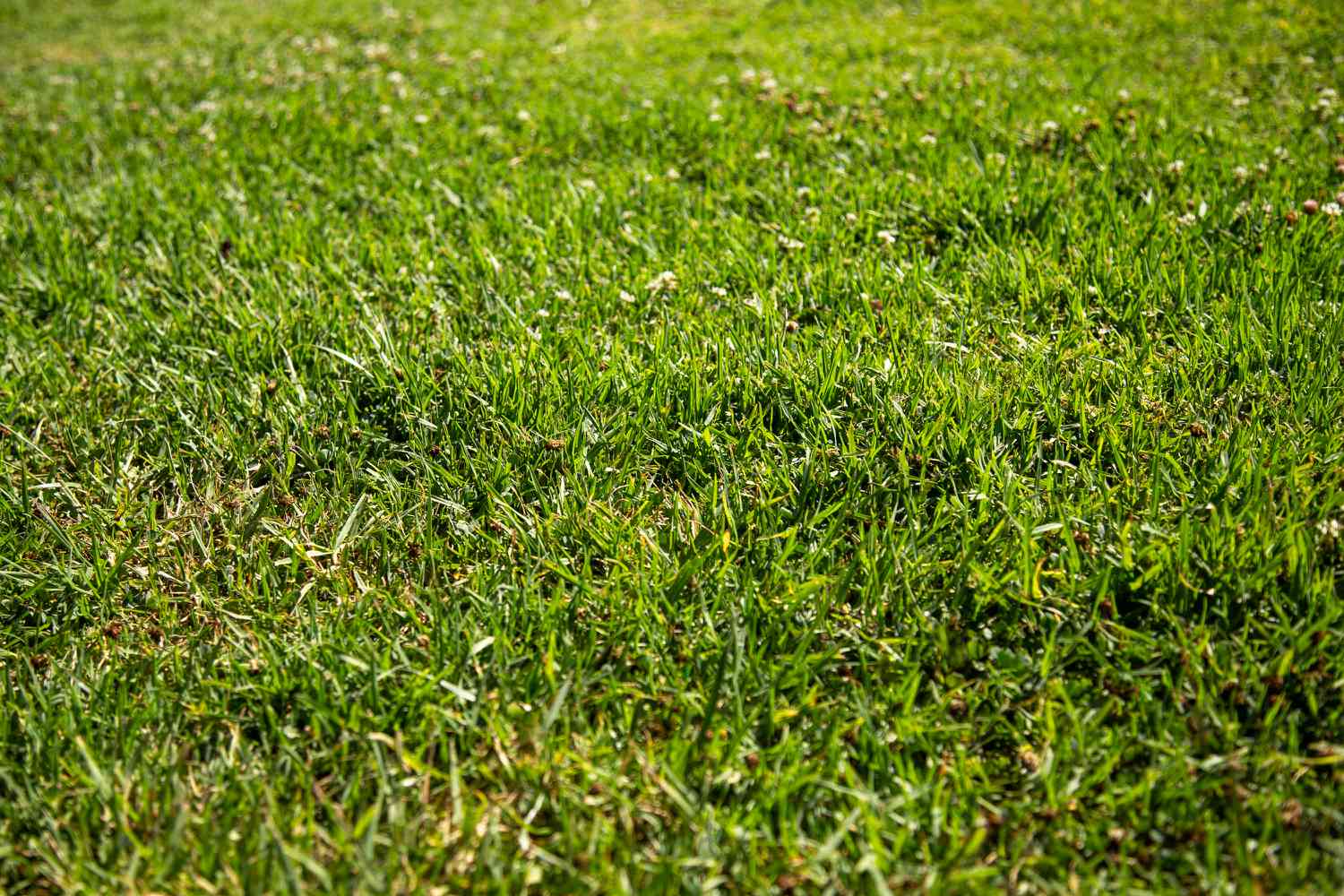Home>Gardening & Outdoor>Landscaping Ideas>What Grass To Mix With St. Augustine


Landscaping Ideas
What Grass To Mix With St. Augustine
Published: January 26, 2024
Discover the best landscaping ideas for mixing St. Augustine grass with other varieties to create a lush and vibrant lawn. Explore expert tips and recommendations for your landscaping project.
(Many of the links in this article redirect to a specific reviewed product. Your purchase of these products through affiliate links helps to generate commission for Storables.com, at no extra cost. Learn more)
Introduction
Landscaping with St. Augustine grass offers a myriad of benefits, including its lush green appearance, ability to thrive in warm climates, and resilience in the face of moderate shade. However, while St. Augustine grass is a popular choice for lawns, some homeowners may seek to enhance its characteristics by incorporating other grass types into their landscaping. This article aims to provide insights into the best grasses to mix with St. Augustine, taking into account various factors such as climate, soil conditions, and aesthetic preferences. By understanding the compatibility of different grass species with St. Augustine, homeowners can create a diverse and visually appealing lawn that meets their specific needs and preferences. Let's delve into the world of St. Augustine grass and explore the possibilities of combining it with other grass varieties to elevate the beauty and functionality of outdoor spaces.
Key Takeaways:
- Mix Zoysia grass with St. Augustine for a lush, wear-resistant lawn in warm climates, creating a visually appealing blend with vibrant green colors and fine textures.
- Combine Centipede, Bahia, or Bermuda grass with St. Augustine to address specific soil conditions, low maintenance needs, and enhance resilience in challenging environments.
Read more: What Kind Of Grass Is St. Augustine
Characteristics of St. Augustine Grass
St. Augustine grass, known scientifically as Stenotaphrum secundatum, is a warm-season grass prized for its lush, dense growth and vibrant green color. It thrives in tropical and subtropical regions, making it a popular choice for lawns in the southern United States and other warm climate areas. This grass variety is well-suited for areas with moderate shade, making it an excellent option for yards with trees or structures that provide partial sun coverage.
One of the key characteristics of St. Augustine grass is its ability to establish a thick, carpet-like lawn that can withstand moderate foot traffic. Its rapid horizontal growth and dense growth habit help it outcompete weeds and create a visually appealing lawn. Additionally, St. Augustine grass exhibits good salt tolerance, making it suitable for coastal regions where salt spray may be a concern.
While St. Augustine grass boasts many desirable traits, it does have some limitations. This grass variety is sensitive to cold temperatures and may experience winter dormancy in regions with frost or prolonged cold spells. It also has specific soil requirements, preferring well-draining soil with a slightly acidic to neutral pH.
Understanding the unique characteristics of St. Augustine grass is crucial when considering options for mixing it with other grass types. By recognizing its strengths and limitations, homeowners can make informed decisions about complementary grass species that can enhance the overall resilience and aesthetic appeal of their lawns.
Factors to Consider When Choosing Grass to Mix with St. Augustine
When contemplating the integration of additional grass types with St. Augustine, several important factors should be taken into account to ensure a harmonious and thriving lawn. Understanding these considerations can guide homeowners in making informed decisions that align with their specific landscaping goals and environmental conditions.
- Climate Compatibility: One of the primary considerations is the climate of the region. Different grass species thrive in specific climate zones, and selecting a grass variety that complements St. Augustine’s preference for warm and humid conditions is essential. Factors such as temperature ranges, average rainfall, and humidity levels should be evaluated to determine the compatibility of potential grass mixtures.
- Soil Characteristics: Assessing the soil composition and drainage properties is crucial when choosing companion grasses for St. Augustine. While St. Augustine grass prefers well-draining soil, other grass species may have differing soil requirements. Understanding the soil pH, texture, and nutrient levels can aid in selecting grass types that will coexist harmoniously with St. Augustine.
- Shade Tolerance: Considering the shade tolerance of various grass species is vital, especially when integrating them with St. Augustine, which demonstrates moderate shade tolerance. Evaluating the amount of sunlight different areas of the lawn receive throughout the day can help determine the suitability of specific grass types for shaded or sun-exposed regions.
- Maintenance Requirements: Each grass variety has distinct maintenance needs, including mowing height, watering frequency, and fertilization schedules. Assessing the combined maintenance requirements of St. Augustine and potential companion grasses is essential to ensure that the overall lawn care regimen remains manageable and sustainable.
- Aesthetic Considerations: Homeowners may have specific aesthetic preferences for their lawns, such as color, texture, and overall appearance. Selecting companion grasses that complement St. Augustine in terms of visual appeal can contribute to a cohesive and visually pleasing lawn landscape.
By carefully considering these factors, homeowners can make informed decisions when selecting grass types to mix with St. Augustine, ultimately creating a balanced and resilient lawn that thrives in its unique environmental context.
Consider mixing St. Augustine with shade-tolerant grasses like Zoysia or Bahia for a more resilient and diverse lawn. These grasses can help fill in any bare spots and provide better coverage in different light conditions.
Best Grasses to Mix with St. Augustine
When seeking to complement St. Augustine grass with additional varieties, several grass species stand out as compatible options, offering a harmonious blend of characteristics that can enhance the overall resilience and aesthetic appeal of the lawn. Consider the following grasses as ideal candidates for mixing with St. Augustine:
- Zoysia Grass: Zoysia grass shares many favorable traits with St. Augustine, including its tolerance for warm climates and moderate shade. It forms a dense, lush turf and exhibits good wear resistance, making it a suitable companion for St. Augustine in high-traffic areas. Additionally, Zoysia’s fine texture and vibrant green color complement the appearance of St. Augustine, resulting in a visually appealing blend.
- Centipede Grass: Centipede grass is well-suited for mixing with St. Augustine, particularly in areas with low soil fertility and acidic conditions. Its low maintenance requirements, including minimal fertilization and mowing, make it an attractive option for homeowners seeking a hassle-free lawn. Centipede grass’s light green hue and low growth habit create a pleasing contrast when combined with St. Augustine.
- Bahia Grass: Bahia grass is known for its exceptional heat tolerance and resilience in challenging soil conditions, making it a compatible companion for St. Augustine in regions with intense sun exposure and sandy soils. Its deep root system contributes to overall soil health and erosion control, enhancing the stability and vigor of the lawn when integrated with St. Augustine.
- Bermuda Grass: Bermuda grass is a versatile option for mixing with St. Augustine, especially in areas with full sun and high foot traffic. Its rapid spreading and regenerative capabilities make it an excellent choice for repairing bare spots and complementing St. Augustine’s growth pattern. Bermuda grass’s fine texture and drought tolerance further contribute to a dynamic and resilient lawn composition.
When considering these grasses for mixing with St. Augustine, it’s important to evaluate their compatibility with the local climate, soil conditions, and maintenance requirements. By selecting grass varieties that align with these factors, homeowners can create a diverse and robust lawn that combines the unique strengths of each grass species, resulting in a visually captivating and enduring outdoor landscape.
Conclusion
Exploring the possibilities of mixing St. Augustine grass with compatible companion grasses opens up a world of potential for creating diverse, resilient, and visually captivating lawns. By understanding the unique characteristics of St. Augustine and considering key factors such as climate compatibility, soil conditions, shade tolerance, maintenance requirements, and aesthetic preferences, homeowners can make informed decisions when selecting grass varieties to complement St. Augustine.
The best grasses to mix with St. Augustine, including Zoysia grass, Centipede grass, Bahia grass, and Bermuda grass, offer a range of beneficial traits that can enhance the overall functionality and appeal of the lawn. Whether it’s achieving a dense, wear-resistant turf, addressing specific soil conditions, or creating a visually pleasing blend of textures and colors, these companion grasses provide opportunities to create dynamic and resilient outdoor landscapes.
By carefully assessing the compatibility of different grass species and their suitability for integration with St. Augustine, homeowners can embark on a landscaping journey that results in a balanced, thriving, and aesthetically pleasing lawn. Whether in warm coastal regions, shaded areas, or high-traffic zones, the thoughtful selection and blending of grass varieties contribute to the creation of outdoor spaces that are both visually stunning and well-adapted to their environmental context.
Ultimately, the art of mixing grasses with St. Augustine lies in harmonizing the unique strengths of each variety to create a cohesive and enduring lawn landscape that aligns with the specific needs and preferences of homeowners. With careful consideration of the factors at play and an appreciation for the diverse characteristics of different grass species, the combination of St. Augustine with compatible companion grasses can elevate the beauty, functionality, and resilience of outdoor environments, enriching the outdoor experience for homeowners and visitors alike.
Frequently Asked Questions about What Grass To Mix With St. Augustine
Was this page helpful?
At Storables.com, we guarantee accurate and reliable information. Our content, validated by Expert Board Contributors, is crafted following stringent Editorial Policies. We're committed to providing you with well-researched, expert-backed insights for all your informational needs.
















0 thoughts on “What Grass To Mix With St. Augustine”